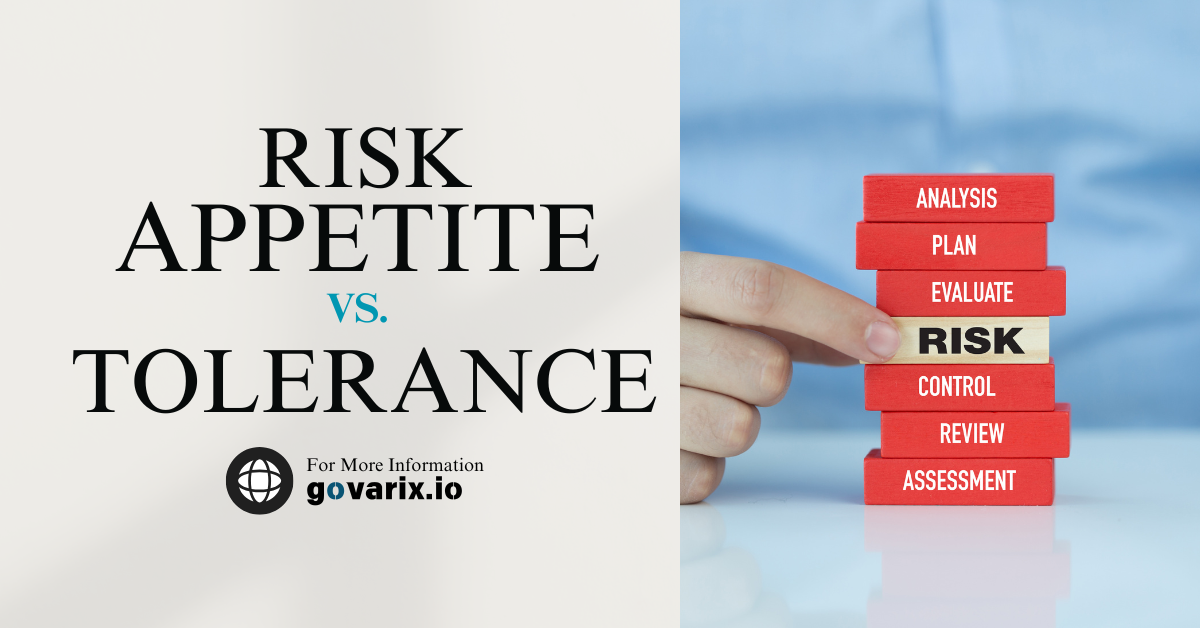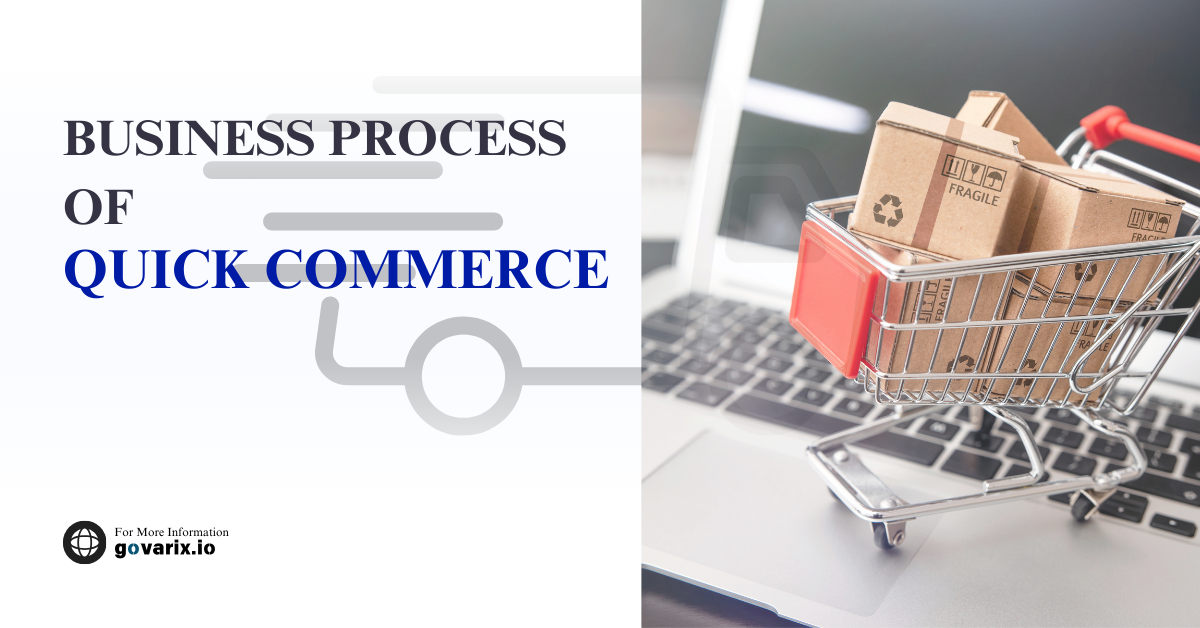Introduction
In today’s dynamic business environment, organizations must carefully navigate risks while seizing growth opportunities. Two critical concepts in risk management—Risk Appetite and Risk Tolerance—help businesses establish a strategic approach to managing uncertainties.
But what exactly is the difference between Risk Appetite and Risk Tolerance? How can businesses use them to enhance corporate governance, decision-making, and financial stability?
This blogpost explores these concepts in-depth, including their definitions, key differences, industry examples, and best practices for implementation.
What is Risk Appetite?
Risk Appetite refers to the amount and type of risk an organization is willing to take in pursuit of its strategic objectives. It reflects the organization’s philosophy towards risk-taking and defines the acceptable risk boundaries within which it operates.
Business Example:
- A Venture Capital (VC) Firm may have a high-risk appetite for investing in early-stage startups, as they anticipate high returns despite the inherent risks.
- A Healthcare Organization may have a low-risk appetite for operational risks due to strict regulatory requirements and patient safety concerns.
Key Factors Influencing Risk Appetite:
- Industry & Market Conditions – Tech firms typically have a higher risk appetite than traditional banks.
- Regulatory Landscape – Stringent laws may limit the willingness to take risks.
- Financial Health – Companies with strong financial reserves can afford a higher risk appetite.
- Stakeholder Expectations – Investors and customers influence a company’s risk stance.
- Growth Strategy – Aggressive expansion requires higher risk-taking.
What is Risk Tolerance?
Risk Tolerance is the maximum level of risk an organization can accept and manage before taking corrective action. It defines the absolute limits that should not be breached under any circumstances.
Business Example:
- A Financial Institution may have a risk tolerance of no more than 5% loss in its investment portfolio before triggering a risk mitigation plan.
- A Manufacturing Company may have a risk tolerance of 2% defective products before initiating corrective actions in quality control.
Key Characteristics of Risk Tolerance:
- Quantifiable & Measurable – Defined using specific thresholds.
- More Rigid Than Risk Appetite – Acts as a hard stop for risk-taking.
- Adjustable Over Time – Organizations can reassess based on external factors.
Key Differences Between Risk Appetite & Risk Tolerance
| Feature | Risk Appetite | Risk Tolerance |
|---|---|---|
| Definition | The amount of risk an organization wants to take | The maximum level of risk an organization can withstand |
| Flexibility | Can change based on market conditions & strategy | More rigid and specific |
| Measurement | Broad statements about risk-taking willingness | Defined thresholds & limits |
| Application | Guides decision-making & business strategy | Helps in risk management & compliance |
| Example | A retail company wants to expand into new markets despite risks | The company sets a 3% maximum budget loss tolerance for expansion |
Why Understanding Risk Appetite & Risk Tolerance is Crucial?
1. Better Decision-Making
By defining risk appetite and risk tolerance, organizations ensure that risk-taking is strategic rather than reckless.
Example: A tech startup with a high-risk appetite may invest heavily in AI R&D, but its risk tolerance prevents exceeding 10% of annual revenue on experimental projects.
2. Regulatory Compliance & Governance
Financial institutions and healthcare organizations must comply with Basel III, IFRS 9, and GDPR regulations, ensuring their risk tolerance limits align with compliance frameworks.
Example: A bank may set a zero tolerance for anti-money laundering (AML) violations while maintaining a moderate risk appetite for innovative fintech collaborations.
3. Enhanced Financial Stability
A well-structured Risk Appetite Statement (RAS) helps companies balance risks and returns, ensuring long-term financial health.
Example: A real estate investment firm may have a high-risk appetite for new projects but a strict risk tolerance of a 15% maximum loss on property investments.
Develop a Risk Appetite and Tolerance Framework
A Risk Appetite and Risk Tolerance Framework is essential for businesses looking to balance growth opportunities with risk exposure. Without a well-defined framework, companies may either take excessive risks, jeopardizing financial stability, or remain overly cautious, missing out on valuable opportunities.
This guide will walk you through a step-by-step process to develop a Risk Appetite and Tolerance Framework, ensuring alignment with your business objectives, industry regulations, and financial capabilities.
Step 1: Define Business Objectives & Risk Strategy
Before setting risk boundaries, businesses must clearly define their strategic objectives and identify how risk-taking supports these goals.
Example:
✅ Tech Startup – Aiming for rapid innovation in AI-driven solutions while maintaining data security.
✅ Retail Chain – Expanding into global markets while ensuring supply chain resilience.
Actionable Steps:
- Identify core business objectives (e.g., market expansion, profitability, sustainability).
- Define how risk appetite aligns with these objectives.
- Ensure stakeholders (Board, CFO, Risk Committee) are involved in the discussions.
Step 2: Identify & Categorize Risks
Different industries face different risk types. Categorizing these risks helps in prioritizing and managing them effectively.
Example:
✅ Banking Sector – Faces credit risks, market risks, and compliance risks.
✅ E-Commerce Business – Faces cybersecurity risks, supply chain disruptions, and brand reputation risks.
Actionable Steps:
- List key risks relevant to your industry (financial, operational, strategic, regulatory).
- Categorize them into high, medium, or low-risk based on likelihood & impact.
- Use Risk Taxonomies to organize different risk categories (e.g., credit risk, operational risk, legal risk).
Step 3: Set Risk Appetite Statements
A Risk Appetite Statement (RAS) helps articulate acceptable levels of risk-taking across business functions.
Example of a Risk Appetite Statement:
✅ Banking Industry: “We have a high appetite for investment risk in emerging markets but low appetite for regulatory non-compliance.”
✅ Manufacturing Company: “We accept moderate operational risk to increase productivity but maintain a zero tolerance for workplace safety violations.”
Actionable Steps:
- Draft broad risk appetite statements aligned with business strategy.
- Categorize risk appetite levels:
- High Risk Appetite – Willing to take significant risks for high rewards.
- Medium Risk Appetite – Willing to take measured risks.
- Low Risk Appetite – Conservative, risk-averse approach.
Step 4: Establish Risk Tolerance Limits
Risk Tolerance defines the maximum level of risk a company can withstand before corrective action is required.
Example of Risk Tolerance Limits:
✅ Banking Sector: “We will not exceed 5% of non-performing loans in our portfolio.”
✅ Tech Company: “Cybersecurity breaches should not exceed 0.01% of total transactions annually.”
Actionable Steps:
- Define specific numerical limits for each risk category.
- Use metrics like percentages, financial thresholds, and performance KPIs.
- Implement early warning indicators (e.g., if customer churn reaches 10%, risk controls must be reviewed).
Step 5: Assign Roles & Responsibilities
A clear governance structure ensures risk appetite and tolerance are monitored and enforced properly.
Example of Risk Governance Structure:
✅ Board of Directors – Approves and oversees the Risk Appetite Framework.
✅ Chief Risk Officer (CRO) – Ensures risk appetite aligns with regulatory and operational controls.
✅ Business Unit Heads – Implement risk policies within their departments.
Actionable Steps:
- Assign specific responsibilities for managing and reporting risks.
- Define escalation protocols if risk tolerance thresholds are breached.
- Ensure continuous communication between risk managers and decision-makers.
Step 6: Implement Risk Appetite & Tolerance in Decision-Making
A Risk Appetite & Tolerance Framework is useless unless integrated into daily decision-making.
Example:
✅ Retail Business: Before launching new stores in a high-risk region, the company assesses risk appetite for market expansion and ensures risk tolerance is not exceeded.
✅ Investment Firm: Portfolio managers use risk tolerance thresholds to allocate investments across low-risk and high-risk assets.
Actionable Steps:
- Integrate risk appetite into strategic planning, investment decisions, and operations.
- Use scenario analysis and stress testing to evaluate risk exposure.
- Implement automated risk monitoring tools to track real-time risk performance.
Step 7: Monitor, Review & Update Regularly
Risk appetite and tolerance should evolve based on market conditions, business growth, and regulatory changes.
Example:
✅ A SaaS company may increase its risk appetite for AI adoption as technology matures.
✅ A financial institution may reduce its risk appetite for cryptocurrency investments due to market volatility.
Actionable Steps:
- Conduct quarterly risk reviews.
- Perform stress testing & scenario analysis.
- Update Risk Appetite Statements & Tolerance Limits based on business needs.
📊 Summary on Steps to Develop a Risk Appetite & Tolerance Framework
| Step | Description | Example |
|---|---|---|
| 1. Define Business Objectives | Align risk appetite with business strategy | A FinTech startup aims for global expansion |
| 2. Identify & Categorize Risks | Define industry-specific risks | Banking: Credit, Compliance, Market Risks |
| 3. Set Risk Appetite Statements | Define acceptable risk levels | A bank accepts investment risks but avoids regulatory risks |
| 4. Establish Risk Tolerance Limits | Define maximum risk exposure | No more than 5% of portfolio losses in banking |
| 5. Assign Roles & Responsibilities | Ensure governance & risk accountability | CRO & Risk Committees oversee implementation |
| 6. Implement in Decision-Making | Use risk data to inform business decisions | Retail chains use risk appetite to guide expansion |
| 7. Monitor, Review & Update | Adapt risk appetite based on market changes | A SaaS firm adjusts AI risk appetite based on regulations |
Real-World Industry Examples of Risk Appetite & Risk Tolerance
🔹 Banking Sector (Risk Appetite vs. Risk Tolerance)
✅ Risk Appetite – A bank may be willing to take higher investment risks to grow revenue.
✅ Risk Tolerance – The same bank limits non-performing loans to below 5%.
🔹 Tech Industry (Risk Appetite vs. Risk Tolerance)
✅ Risk Appetite – A SaaS company may experiment with AI for automation.
✅ Risk Tolerance – The company will not accept more than 1% annual system downtime.
🔹 E-Commerce (Risk Appetite vs. Risk Tolerance)
✅ Risk Appetite – A retailer may expand into international markets.
✅ Risk Tolerance – The company will not exceed 20% of its annual revenue in expansion costs.
Why Every Business Needs a Risk Appetite & Risk Tolerance Strategy
To thrive in a competitive market, businesses must adopt a structured risk management approach. Defining Risk Appetite ensures companies pursue profitable opportunities, while Risk Tolerance prevents excessive losses and compliance violations.
By implementing a Risk Appetite & Tolerance Framework, businesses can align decision-making with strategy, mitigate risks, and enhance stakeholder confidence.
References & Further Reading
- Risk Appetite Statements: Best Practices & Latest Research (Gaby Frangieh, 2024)
- IRM Risk Appetite & Tolerance Guidance (Institute of Risk Management, 2024)
- Basel III Framework – www.bis.org
- ISO 31000 Risk Management Guidelines – www.iso.org
- Financial Stability Board (FSB) Reports – www.fsb.org









